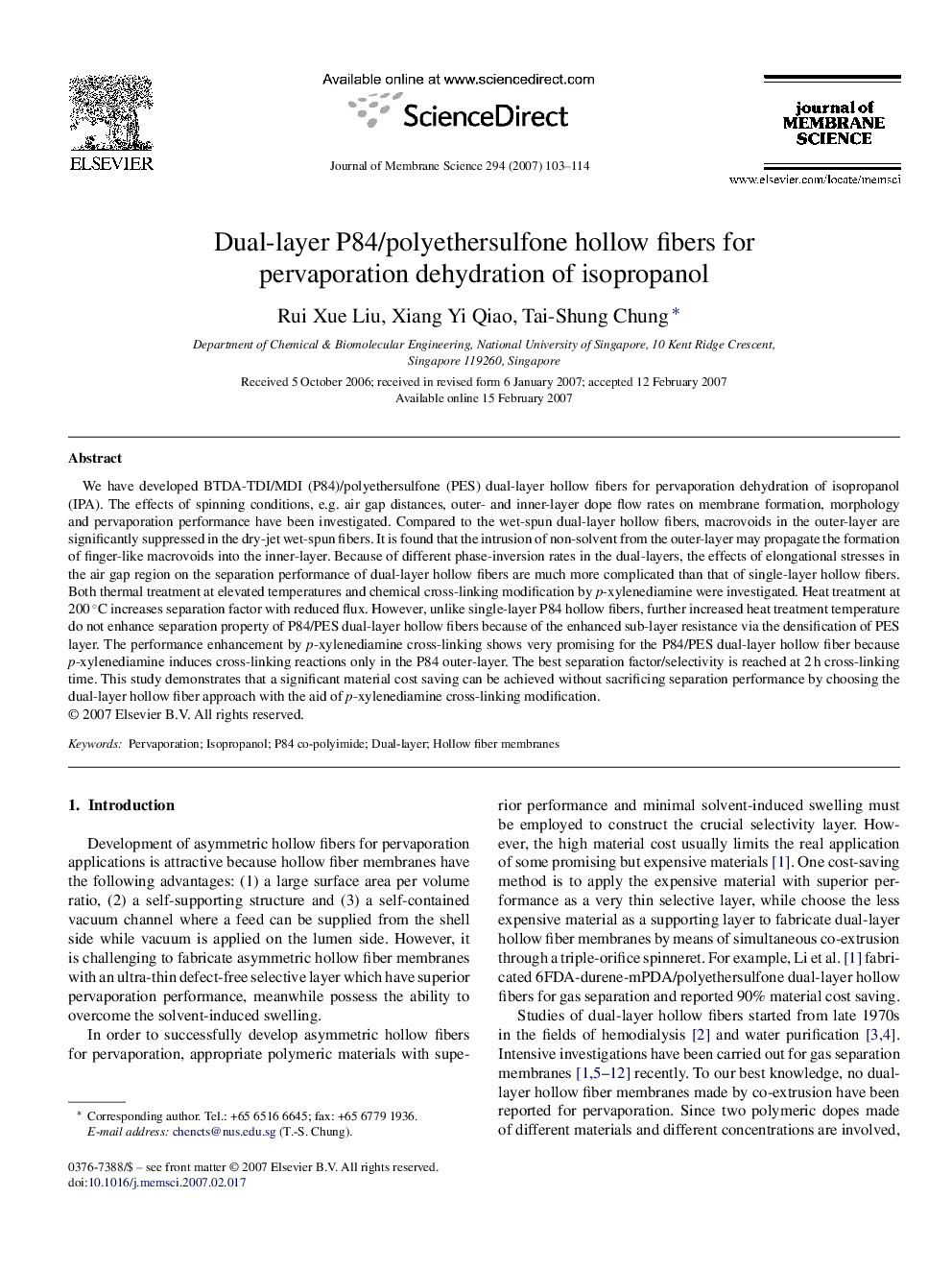| Article ID | Journal | Published Year | Pages | File Type |
|---|---|---|---|---|
| 638770 | Journal of Membrane Science | 2007 | 12 Pages |
We have developed BTDA-TDI/MDI (P84)/polyethersulfone (PES) dual-layer hollow fibers for pervaporation dehydration of isopropanol (IPA). The effects of spinning conditions, e.g. air gap distances, outer- and inner-layer dope flow rates on membrane formation, morphology and pervaporation performance have been investigated. Compared to the wet-spun dual-layer hollow fibers, macrovoids in the outer-layer are significantly suppressed in the dry-jet wet-spun fibers. It is found that the intrusion of non-solvent from the outer-layer may propagate the formation of finger-like macrovoids into the inner-layer. Because of different phase-inversion rates in the dual-layers, the effects of elongational stresses in the air gap region on the separation performance of dual-layer hollow fibers are much more complicated than that of single-layer hollow fibers. Both thermal treatment at elevated temperatures and chemical cross-linking modification by p-xylenediamine were investigated. Heat treatment at 200 °C increases separation factor with reduced flux. However, unlike single-layer P84 hollow fibers, further increased heat treatment temperature do not enhance separation property of P84/PES dual-layer hollow fibers because of the enhanced sub-layer resistance via the densification of PES layer. The performance enhancement by p-xylenediamine cross-linking shows very promising for the P84/PES dual-layer hollow fiber because p-xylenediamine induces cross-linking reactions only in the P84 outer-layer. The best separation factor/selectivity is reached at 2 h cross-linking time. This study demonstrates that a significant material cost saving can be achieved without sacrificing separation performance by choosing the dual-layer hollow fiber approach with the aid of p-xylenediamine cross-linking modification.
